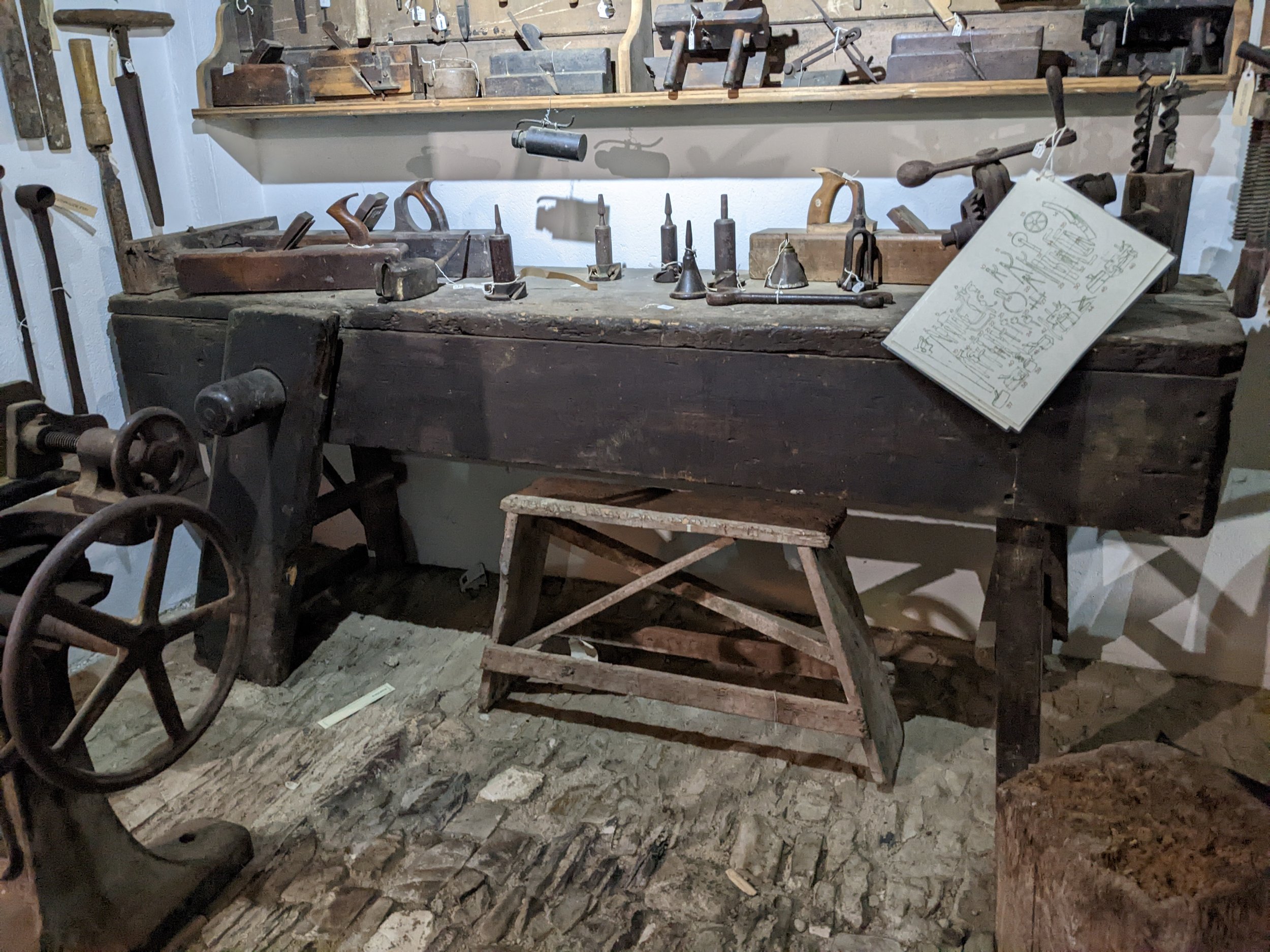The Conundrum of the Workshops
From a visit to the Museum of Dartmoor Life.
That’s a lovely tool you have in your hands, ‘till the Devil whispered from among the shavings “It’s pretty, but is it Flat?”.
We've lost, and will continue to lose, souls to the tool-tuning devil and his wicked ways. Flat is a term that many woodworkers, especially new, will get used to hearing. How flat is the face of your chisel or plane iron? How flat is the sole of your plane? How flat is your workbench? How flat must these things be? These days, the poor beginner will be forgiven for being lost. “Is it me or is it because these things I use are not flat?”
Before you go any further, quit fettling planes, chisels and workbenches and take a breath. Chisels are easy, forget the concept of flat. Can you remove the burr? Yes? Good, you are sharp and may proceed. Plane irons too, can you remove the burr? If you can that’s all you need worry about. Good, another hurdle is cleared! How about your workbench. Use a basic straight edge, practical people often have a good spirit level. This is more than adequate. We are no looking for level, although something near level is good. Adjust you bench on packers as required to get it level(ish). Then make sure the level doesn’t rock around on bellies, if it doesn’t rock are there large amounts light shining under substantial valleys? With a combination of winding sticks and a straight edge a bench can be corrected swiftly with a good plane. A workbench doesn’t need to a completely laser flat, CNC milled surface. It is not usual to have massive pieces of wood on the bench that exceed it’s size. If we do it is likely a table top which will resist deflection as you work on it.
The sole of a plane is a different matter. If it is hollow or concave in its length it will be useless and it is surprising how little an error here can create such an issue. If you have a very expensive engineers straight edge and feeler gauges you can test this. But remember, these weren’t present old woodworking shops and the work from most of those eclipses much of what is produced today. If you have bought a well made modern plane it is highly unlikely to be defective and will be perfectly flat enough. You will have the added benefit of discussing any issues you have with your chosen brand. Instead of getting too caught up with feeler gauges and such, try and plane the edge of a board hollow along it’s edge. It sounds silly, but try to gently add pressure in the right areas and see if you can make it so. More than likely it will go the opposite way and a belly will result. Practice some more. To know if you have succeed, plane a second board using the same method. Full length and full width shavings. Place both planed edged on top of one another as if they are to be edge glued. Now with care try and rotate them. Are they belly to belly and rocking or hollow to hollow and stable? Keep practicing this until you get your hollow to hollow. You may then forget any concerns of flat planes and go about your work.
I lifted the tile of this blog from Rudyard Kipling’s poem, check it out, it’s a good one.


